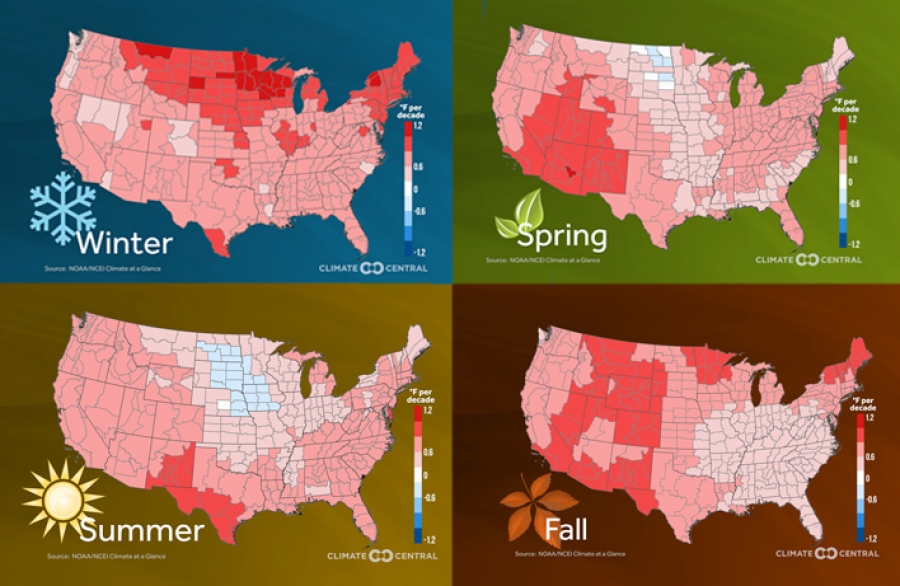
A season is a period of the year that is distinguished by special climate conditions. The four seasons—spring, summer, fall, and winter—follow one another regularly. Each has its own light, temperature, and weather patterns that repeat yearly.
Outline
The Reasons for the Seasons
-
- Inclination of the Earth (23.5 degrees)
- Angle of the sun’s rays
- Associated lines of latitude
Circulation of the Atmosphere
-
- Equalization of temperature
- Hadley-Ferrel
- Three convective circuits in each hemisphere
- Location of the tropics and desert areas
Reasons for Seasons

The Earth rotates along its axis, which is tilted about 23.5 degrees. Throughout the year (or throughout its orbit), the earth maintains the same angle of inclination, parallel to itself at all points in its orbit. This means that when the Earth rotates to different locations on its orbit around the sun, there are different parts of Earth that are tilted toward the sun.
Alone, this does not explain why we have seasons. The sun emits rays, which hit the Earth’s surface at different angles. When these rays strike the earth at a perpendicular angle (90 degrees), a high level of energy is transferred. Hence, the locations where these so-inclined sun rays hit tend to be the hottest places on the planet. Other locations, where the sun’s rays hit at lesser angles, tend to be cooler. When it is summer in North America, it is because the North Pole and the rest of the Northern Hemisphere are pointing toward the Sun. Because we are pointed toward the Sun longer each day, it seems like the Sun appears more in the sky longer. When we spend more time in the sunshine and less in the shadow of night, our part of the Earth gets warmer, and we experience summer.
There are four major lines of latitude that are related to the inclined sun’s rays and the changing of the seasons. The first line of latitude is at 23.5 degrees North of the equator, in which the Tropic of Cancer exists. This latitude is the farthest north on the Earth that the sun’s rays will be directly overhead. Reciprocally, at 23.5 degrees South latitude, lays the Tropic of Capricorn. Then, there are two “circles” to recall are the Arctic Circle, which lies at 66.5 degrees North latitude. There is also the Antarctic Circle, which lies at 66.5 degrees South latitude. Two important dates concerning the Tropics are June 21st and December 21st. On June 21st, the sun’s rays hit the earth perpendicular at 90 degrees upon the Tropic of Cancer. This day is known as the Summer Solstice. The same happens on December 21st at the Tropic of Capricorn.
Circulation of Atmosphere
Equalization of temperature is air that circulates through the atmosphere within cold and warm fronts. With the help of these fronts, precipitation reaches areas further away from water masses.
The Hadley-Ferrell Model was a particular atmospheric model that incorporates three counter-rotating, compensating cells for the north and south hemispheres. These cells consist of moving air masses, which eventually create rainfall and other forms of weather. From north to south, they turn as follows: counterclockwise, clockwise, counterclockwise, clockwise, counterclockwise, and clockwise. As you can tell, starting at the equator is the Hadley cell in which warm air converges and rises, which formulates a low pressure. Then there is the Ferrel cell, which consists of high pressure and descending air. Finally is the Polar cells that correspond to the North and South Poles, which are very cold with high-pressure, hence the Polar front.






























